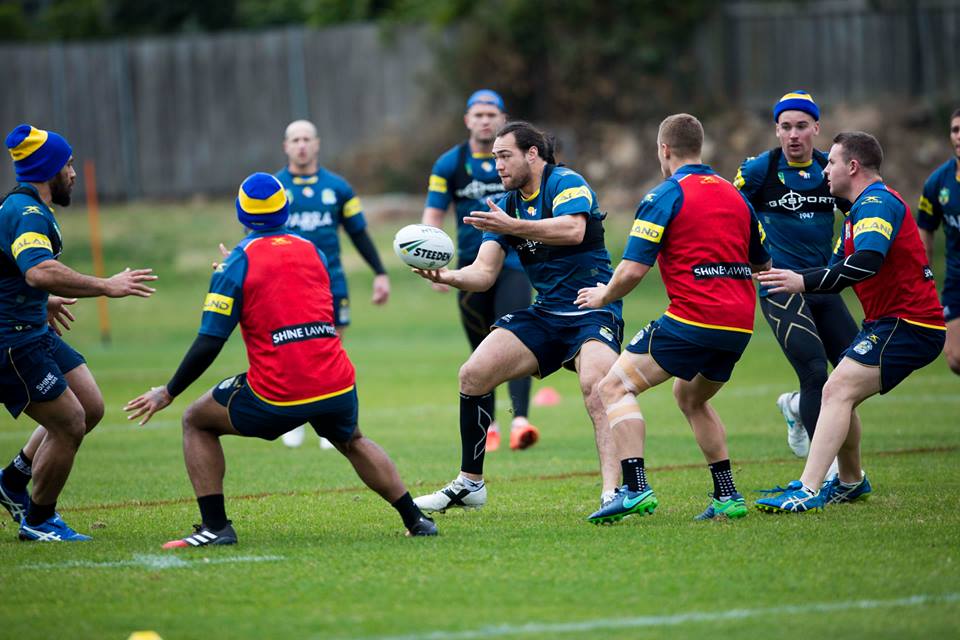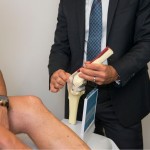
A game of professional rugby league is 80 minutes of one of the most intense sports played in the world and to compete at the National Rugby League level, our players are required to be both explosive and endurance athletes.
It’s great to see the boys in the top 8 and as a club; the players, coaching staff, trainers and doctors have 3 key things that we are focused on.
- Keep injury free
- Achieve and maintain peak fitness
- Keep your eye on the prize
Each of these focus points are just as important to everyone who wants to maintain good joint health.
Here are some tips used by the Eels that you can apply to your lifestyle during the cold months to help you have healthy bones and joints.
Keep injury free
In the colder months it’s easier to incur a new injury or exacerbate or aggravate an old injury as cold muscles, tendons and ligaments are more susceptible to sprains, strains and tears. You can help to prevent injuries by following some basic rules.
- Increase your warm-up time.
The most effective warm ups are those that involve doing some of the same exercises you are planning for your full session but at a lower intensity – ie a light jog is an ideal warm up prior to a run.
You should look at doubling your warm up time in winter. This increases blood flow to your muscles as well as improving your joint mobility.
- Dress appropriately
In the cold our body loses heat faster which means we are using up more of our energy levels to keep warm. Ensuring you wear the right clothing when exercising will help to maintain your body temperature and assist in injury prevention.
Layers work well as they can be taken off and put back on as you need them. Make sure the base layer that is next to your skin is something that will draw sweat away from your body, then another layer on top and if it’s really cold an additional layer to block wind and rain.
One of the biggest sources of heat loss is through our head, so make sure you have that covered too!
- Avoid being a weekend warrior
In the colder months we can fall into the habit of only exercising on the weekend as it can be too dark or cold after work in winter.
But did you know that statistics show us that “once a week” athletes are at greater risk of injuries?
Try to ensure you consistently do exercise on a daily basis and if you play team sports getting a pre-season training program in place is particularly important to help avoid injuries.
- Keep hydrated
It’s easy to remember to drink during the hotter months, but it’s just as important to keep hydrated when exercising in the colder months. Good hydration before, during and after exercise is a key factor to you getting the most out of your exercise routine.
Water is always the best option as it is calorie free. Avoid caffeine drinks as they can cause dehydration.
- Be careful of the slippery slope
Ski and snowboarding injuries are some of the most common injuries we see in winter – particularly injuries to the knee including ACL (anterior cruciate ligament) and MCL (medial cruciate ligament) injuries due to the excess of flexing, hyperextension and twisting that is required of the knee. They are also some of the most common injuries incurred by professional and recreational footballers.
While we can fix these injuries surgically with very good results, the better option is to do all you can to avoid this type of injury.
If you are going for a ski holiday, make sure you have put a training program in place prior that addresses both strength and endurance to help avoid having the ski patrol help you off the slope as well as cutting your holiday short!
Achieve and maintain peak fitness
What is peak fitness? Simply put – it means achieving a balance of strength and stamina to endure sustained activity. For every individual, building strength and stamina helps in the performance of everyday activities and assists in ensuring we keep our bones and joints healthy. While we may never be elite athletes, we can still achieve good fitness levels; here are some tips.
- Develop healthy habits.
This includes what we eat, how much we rest and a regular daily exercise routine that ideally includes a mix-up of strength and cardio training.
Making a start to new healthy habits can be some basic first steps like cutting out fast food, reducing alcohol consumption and including just 10 minutes of exercise a day. Regular exercise will be of enormous benefit to your joints and can be as simple as taking the stairs instead of the lift and doing some stretching.
Enough rest, good eating habits and exercise will also assist in weight loss. Carrying extra weight is one of the key contributing factors to osteoarthritis, otherwise known as “wear and tear” arthritis that affects us as we age. But if we can keep our joints and bones healthy, we can avoid the need for a hip replacement or a knee replacement as we get older.
Keep your eye on the prize
For the Eels, the prize is easy to define. Winning each game in the final rounds. Maintaining a healthy regime works in assisting them to ensure success.
For the rest of us, each prize is different. But good healthy joints will help us to enjoy an active lifestyle and assist us to enjoy our later life – pain free.
If you need further information or advice on conditions of the hip and knee and available treatment options, please look at our website or call and arrange for an appointment with Dr Shidiak.


